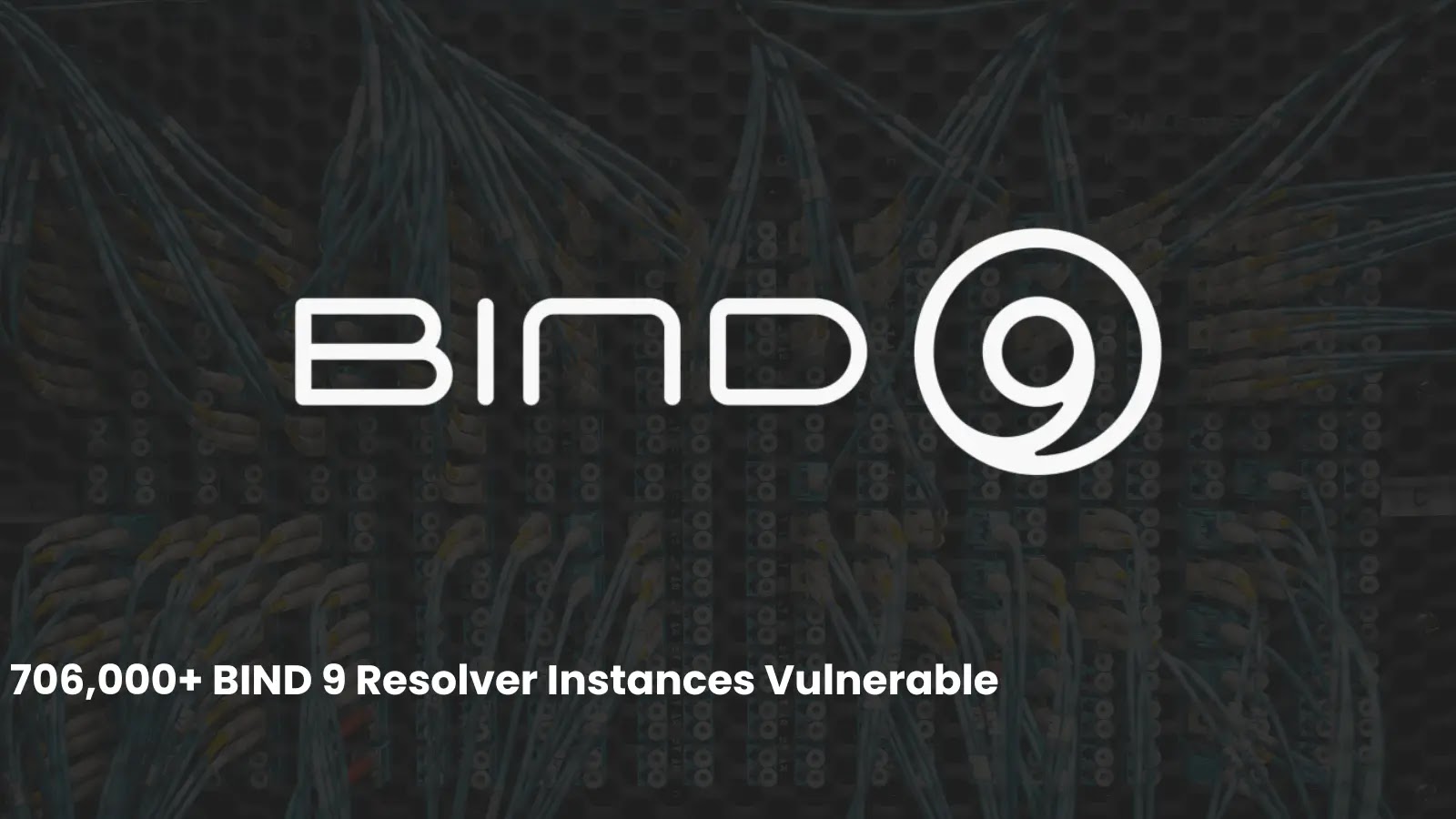
706,000+ BIND 9 Resolver Instances Vulnerable to Cache Poisoning Exposed Online – PoC Released
Unmasking the DNS Threat: Over 706,000 BIND 9 Resolvers Vulnerable to Cache Poisoning
The integrity of the internet relies heavily on a robust and trustworthy Domain Name System (DNS). When that trust is breached, the consequences can be severe, impacting users globally. A high-severity vulnerability (CVE-2025-40778) recently disclosed in BIND 9 resolvers presents just such a threat, potentially allowing attackers to poison DNS caches and redirect unsuspecting users to malicious websites. This exploit isn’t theoretical; a Proof-of-Concept (PoC) has been released, and internet scanning firm Censys has identified over 706,000 exposed instances worldwide.
This widespread exposure of vulnerable BIND 9 resolvers demands immediate attention from IT professionals, network administrators, and cybersecurity teams. Understanding the nature of this vulnerability and implementing timely remediation steps are crucial to protecting digital infrastructure and user safety.
Understanding CVE-2025-40778: A Deep Dive into BIND 9 Cache Poisoning
The vulnerability, assigned a CVSS score of 8.6, stems from BIND’s “overly permissive handling” of specific DNS query responses. In simpler terms, BIND 9 resolvers, when configured in certain ways, are too trusting of incoming DNS data. This trust can be exploited by an attacker to inject fraudulent DNS records into the resolver’s cache. Once poisoned, any subsequent queries for those domains will receive the malicious IP address, redirecting users to attacker-controlled sites for phishing, malware distribution, or other nefarious activities.
Cache poisoning attacks are particularly insidious because they leverage a fundamental component of internet infrastructure. Users who might otherwise verify website authenticity could be seamlessly shunted to fake sites without any overt warning, making detection difficult for the average user.
The Global Exposure: 706,000+ Vulnerable Instances Identified
The sheer scale of this vulnerability is concerning. Censys, a leading internet intelligence platform, revealed that over 706,000 BIND 9 resolver instances are currently exposed online and susceptible to this attack. This staggering number highlights the pervasive use of BIND 9, a testament to its long-standing role in DNS infrastructure, but also underscores the critical need for vigilant security practices. The official CVE entry for this vulnerability can be found at: CVE-2025-40778.
The release of a Proof-of-Concept (PoC) further escalates the urgency. A PoC demonstrates the feasibility of an exploit, often providing a blueprint for more widespread attacks. This means that the window for remediation is shrinking, and unpatched systems are at immediate risk.
Remediation Actions: Securing Your BIND 9 Resolvers
Given the severity and widespread nature of this vulnerability, immediate action is paramount. System administrators responsible for BIND 9 resolvers should prioritize the following steps:
- Update BIND 9: The primary mitigation is to update BIND 9 to the latest patched versions. ISC, the developers of BIND, will release security updates to address this specific vulnerability. Always refer to the official ISC advisories for release details and instructions.
- Review Configuration: Scrutinize your BIND 9 configuration for any “overly permissive handling” settings mentioned in the vulnerability details. While specific details will be in the vendor advisory, this often relates to how BIND validates or accepts responses, especially when acting as a recursive resolver.
- Implement DNSSEC (DNS Security Extensions): DNSSEC adds cryptographic signatures to DNS data, providing authentication of origin and data integrity. While not a direct patch for this BIND 9 specific flaw, a properly implemented DNSSEC chain helps prevent cache poisoning by ensuring the authenticity of DNS responses.
- Restrict Recursive Queries: If your BIND 9 instance is not intended for public recursive queries, ensure it is configured to only answer iterative queries or restrict recursive access to trusted internal networks. An open recursive resolver is a common target for cache poisoning and other DNS-based attacks.
- Monitor DNS Traffic: Implement robust DNS monitoring solutions to detect unusual query volumes, unexpected response types, or sudden changes in resolved IP addresses. Anomalies can indicate a cache poisoning attempt.
- Regular Audits: Perform regular security audits of your DNS infrastructure to identify misconfigurations, outdated software, and potential attack vectors.
Tools for Detection and Mitigation
The following tools can assist in identifying vulnerable systems and fortifying your DNS infrastructure:
| Tool Name | Purpose | Link |
|---|---|---|
| Censys ASM Platform | Identifies exposed BIND instances and other internet-facing assets. | https://censys.io/ |
| DNSSEC Validation Tools | Verifies DNSSEC implementation and correctness for domains. | https://dnsviz.net/ |
| Nmap / Security Scanners | Network scanning for open ports and service version detection (can identify BIND versions). | https://nmap.org/ |
| ISC BIND Official Site | Source for official BIND updates, patches, and security advisories. | https://www.isc.org/bind/ |
Protecting the Internet’s Backbone
The discovery of CVE-2025-40778 in BIND 9 resolver instances serves as a stark reminder of the continuous threats facing critical internet infrastructure. The potential for large-scale cache poisoning attacks, leading to widespread misdirection of internet traffic, is a serious concern. Prompt application of security updates, diligent configuration review, and adherence to DNS best practices are not merely recommendations; they are essential steps in maintaining the stability and security of the global internet ecosystem.





